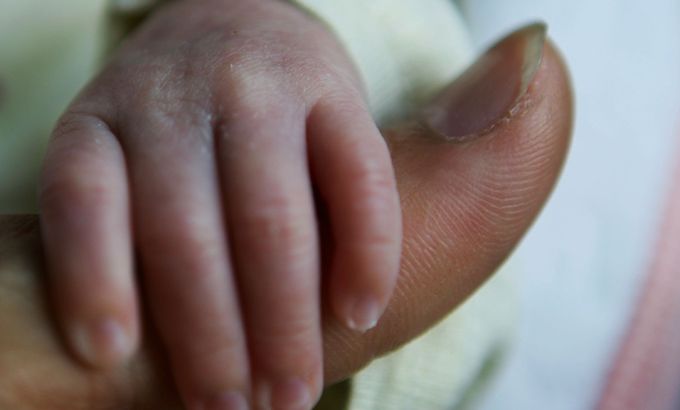
Forced sterilisation: Time for compensation?
We look at how thousands were forcibly sterilised in the 20th century across the US as they were deemed ‘feeble minded’.
Tens of thousands were forcibly sterilised throughout the 20th century across the US as they were deemed “feeble minded” and “inappropriate candidates” for reproduction.
|
“More than 30 states who had laws like this and did sterilise people … only seven of them have stepped up and even recognised that they did it, made some kind of apology or at least said that what they did was wrong.“ – Paul Lombardo, a bioethics and legal scholar |
In 1927, the Supreme Court upheld state statutes permitting compulsory sterilisation in the Buck versus Bell decision.
The Supreme Court ruling, which Nazis at the Nuremberg trials cited in their defence, has never been expressly overturned.
In it, Justice Oliver Wendell Holmes wrote, “It is better for all the world, if instead of waiting to execute degenerate offspring for crime, or to let them starve for their imbecility, society can prevent those who are manifestly unfit from continuing their kind …. Three generations of imbeciles are enough.”
The so-called science of eugenics first emerged in Britain in the mid-19th century, as an offshoot of Darwinism.
It was embraced in the US, and by the beginning of the 20th century, many of the nation’s prominent figures were avowed eugenicists.
|
“By 1960’s … it was a sham … this [forced sterlisation] was going on in case after case and social workers were bullying these people into these operations and it’s a monster hiding in plain sight …. They are sterlising the very story, this programme, they’re telling people we are saving these people from ‘parenthood’…. nobody knew just how aggressive the social workers were.“ – John Railey, co-author of Against Their Will – a special investigative report into North Carolina’s sterlisation programme |
Their stated goal was to improve the health of the country by increasing births and immigration amongst what they called the “fit” and decreasing births and immigration amongst the “unfit”.
Eugenic principles were widely included in academic work, and in federal, state and local laws. And research into eugenics was conducted in America, long before it was undertaken in Nazi Germany.
These enquiries were funded by some of America’s wealthiest families, the Carnegies, the Harrimans, the Kelloggs and the Rockefellars.
Most US states abanonded the practice after World War II, amidst revulsion at the Nazi programme of eugenics.
North Carolina, however, ramped up its use of forced sterilisation, where more than 7,500 were sterilised.
However, the state did halt its program in 1974. And last year, it finally began taking steps to compensate those targeted. But on Thursday, the state’s senate rejected the plan, arguing it was too expensive.
Elaine Riddick was one of those forcibly sterilised in North Carolina, when she was a young girl. Both she and her attorney, Willie Gary say they are disappointed with the senate’s decision, but vow to continue the fight for reparation.
“I was a victim of rape, and as a result of the rape I became pregnant, had my son, went into the hospital and I was sterlisied. They sterilised me without my knowledge or consent,” said Riddick. “My grandmother was coerced into signing for me to become sterlised but she didn’t understand what sterlisation was at that time. All she knew, I believe is that her food supplements were being threatened … if she did not consent.”
So what were the origins of forced sterilisation and how widespread was its use across the United States?
To discuss this, joining Inside Story Americas, with presenter Shihab Rattansi, are guests: Steven Selden, the author of Inheriting Shame: The Story of Eugenics and Racism in America; Paul Lombardo, a bioethics and legal scholar; and John Railey, co-author of an investigative series titled Against Their Will – a special investigative report into North Carolina’s sterilisation program.
|
“We all agree with the fact that an apology is certainly appropriate. But I don’t think that makes us any more sorry because we attach a dollar figure to it.” Chris Carney, Republican state senator, after North Carolina’s senate blocked the measure to compensate victims of forced sterilisation |
___________________________________________________________________________________________________
FACTS ABOUT NORTH CAROLINA’S FORCED STERLISATION PROGRAMME
- North Carolina Senate Republicans blocked compensation for victims
- State senate rejects plan to give $50,000 to each victim of programme
- State senators: Not enough money in budget for compensation
- North Carolina sterilised nearly 7,600 people between 1929 & 1974
- Most victims of North Carolina’s sterilisation programme were women
- North Carolina sterilisation programme ended in 1974
- There are 146 verified living victims of North Carolina programme
- North Carolina’s enacted its first eugenics laws in 1919
- The state disbanded its eugenics board in 1977
- North Carolina’s sterilisation laws were not repealed until 2003